Introduction
In an earlier article, I wrote about starting the journey into pranayama by easing into it during an asana practice. With regular asana practice, you will be ready for home practices focused on pranayama.
I awake with the sky somewhere between dark and light, get up and wash up. I go into the kitchen for a few sips of room-temperature water and then enter my practice space, glancing at the clock at the wall. I hear the birds beginning to chirp outside while I sit down for invocation.
Recollecting the countless times I’ve sat for invocation; I recreate the physical actions.
-
- Sacral-iliac area in and up
- Shoulder bones back and down
- Upper arms turning out
- Shoulder-blades down towards the floor, and forward towards the chest
- Back ribs coiling in
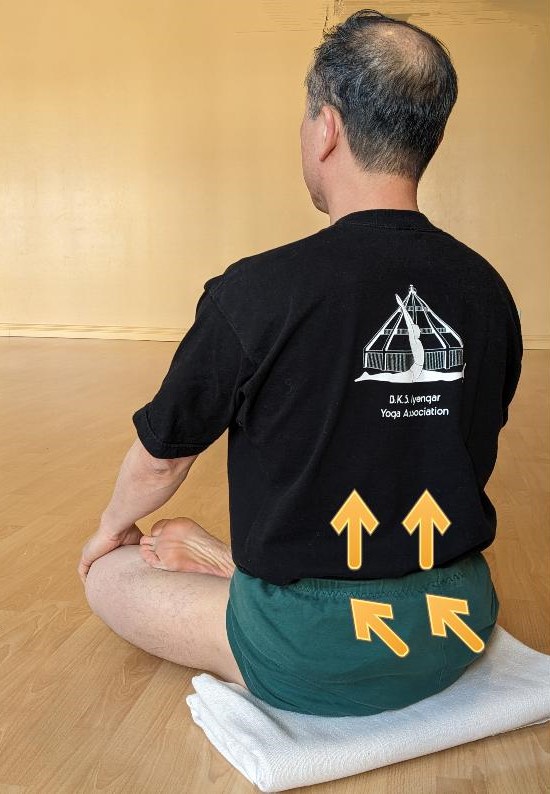
I observe the state of my body, breath and mind. When ready, I chant the invocation and then bow down.
Preparation
Today, I prepare for pranayama via savasana 2, lying on a bolster with a folded blanket under my head.
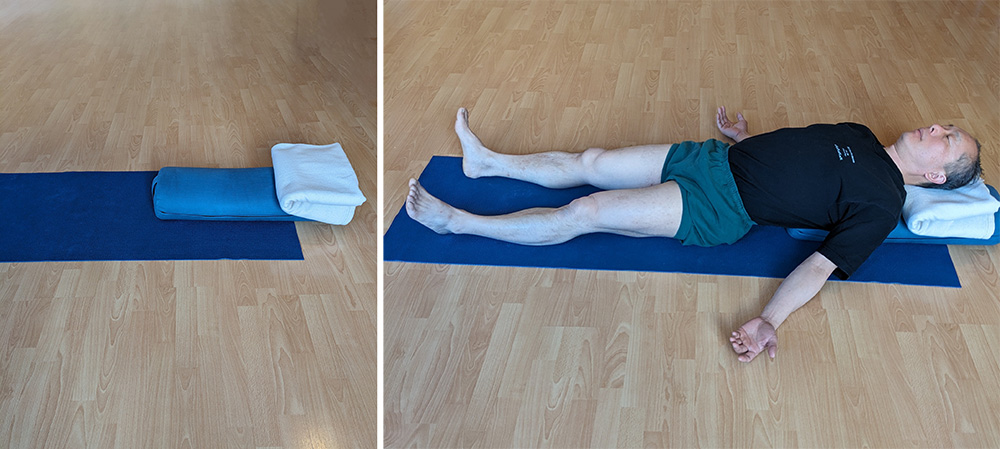
Recollecting the countless times that I’ve laid down for savasana and its variations, I recreate the actions, while becoming steady and stable.
- Recollect the quietness in the abdomen (from other poses such as rope sirsasana)
- Recollect the space between the base-of-neck and base-of-skull (from poses such as urdha hastasana )
- Recollect the width across the front chest (from poses such as utthita hastasana)
- Recollect the upper arms turning out as in tadasana
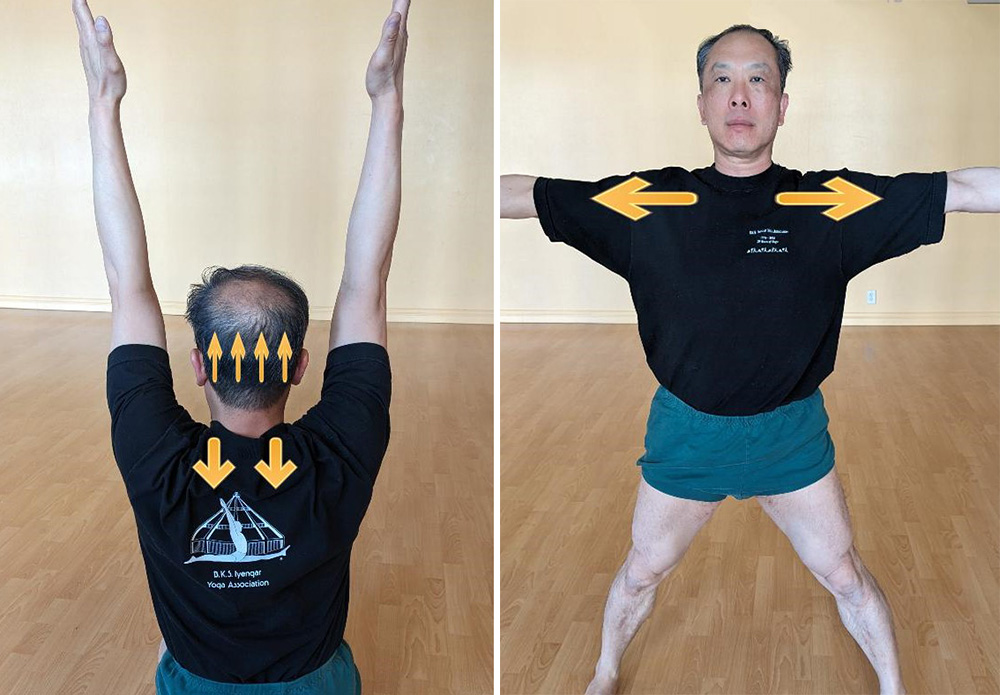
When ready, I start with a slightly longer, more ‘profound’ (as Prashantji says) exhale and observe the breaths gradually smoothing out. What is initially two distinct actions with a sharp break between them, become two perceptions with a gradual transition between, to two opposites that gradually turn into the other.
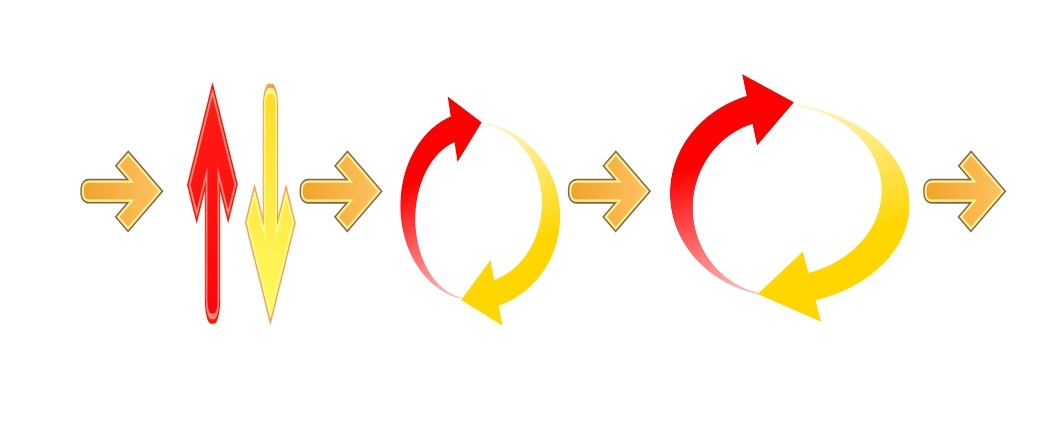
I observe the inhales, the exhales, and the slight suspension that naturally occurs between them.
I look for, and find, the identical-ness from one inhale to the next inhale, and from one exhale to the next exhale.
Although I’m not consciously affecting the breath, the inhales begin to be ‘identical’ from one to the next. The exhales also begin to be ‘identical’ from one to the next. I’m aware that the pauses also become slightly longer in duration.
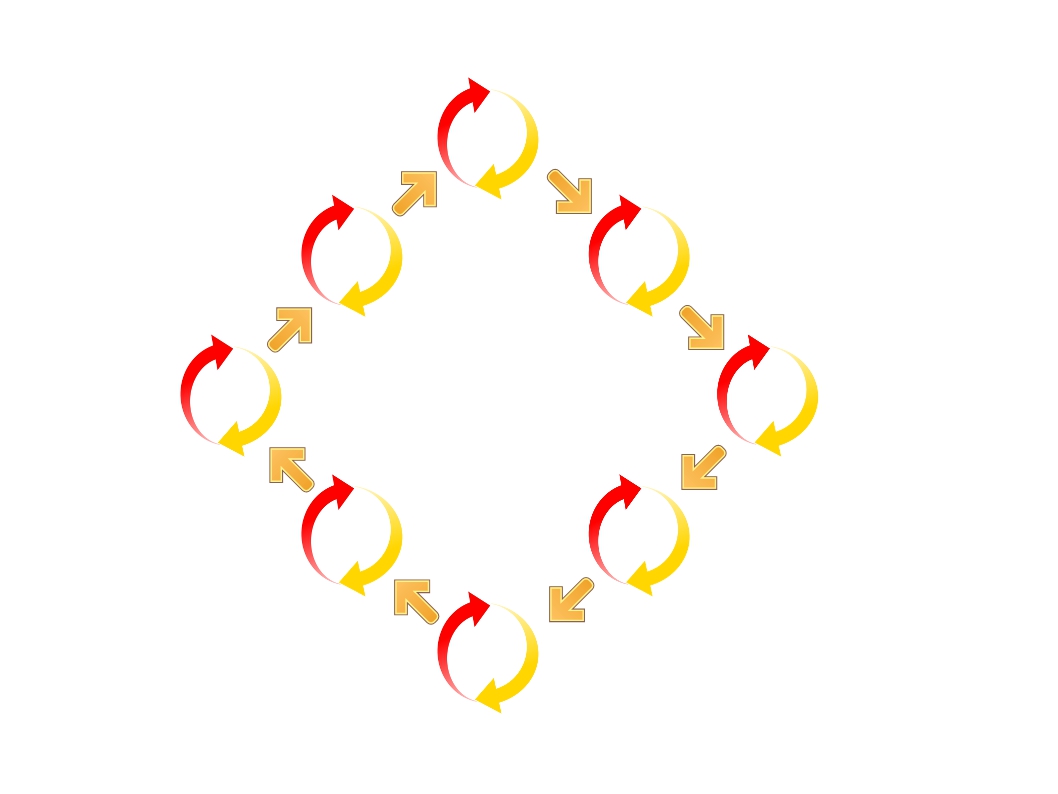
After a time, I decide my preparation is complete. I slowly roll to the right, sit up and change the folded blanket into a tight thick roll.
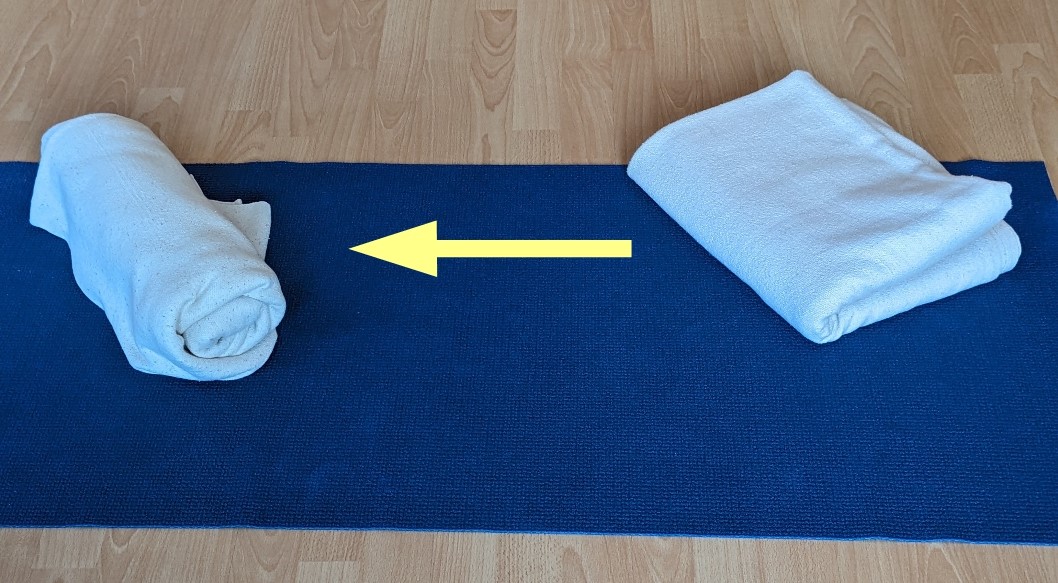
This is to enhance my Jalandhara bandha (chin lock) for viloma pranayama.
Viloma pranayama Stage 1
“Loma means hair, the ‘vi’ denotes disjunction or negation. Viloma means anti-hair or against the natural order of things…. This pranayama may be compared to climbing up or down a tall ladder with a pause at each step.” – Light on Pranayama, Guruji
Light on Pranayama describes several possible stages for viloma pranayama, and today I choose to start with Stage 1, lying on the same bolster but with more height under my head. The roll is on the bolster and will be under my head when I lie down.
I carefully lie down again and adjust the rolled blanket to be directly under the back of my eyes. I repeat the same actions as I did for the preparation, and notice the Jalandhara bandha, facilitated by the rolled blanket giving even more space between the base-of-neck and base-of-skull.
I recollect that that I’ve felt a milder version of that very space in other poses, such as urdhva hastasana in tadasana.
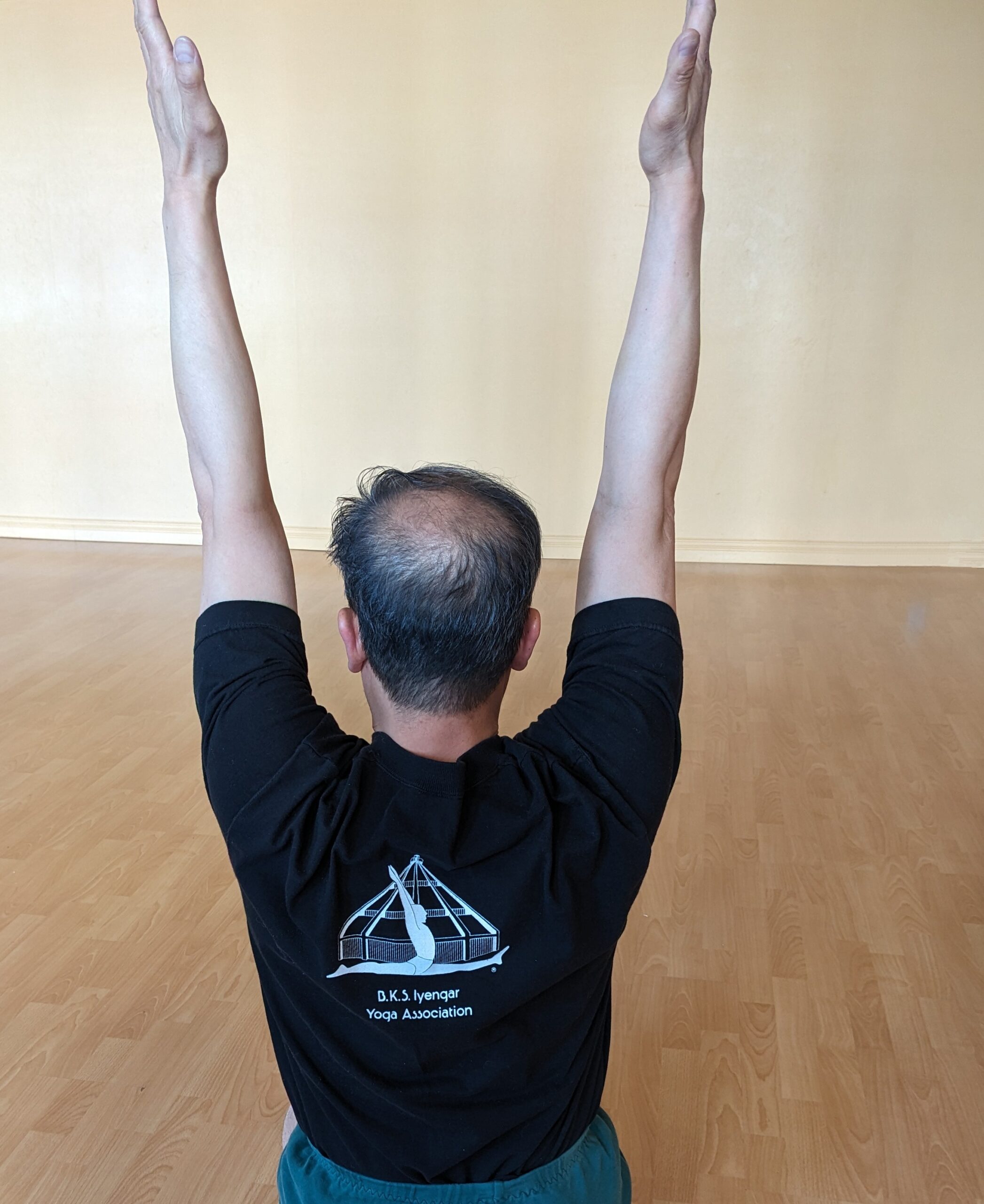
I quickly settle down, aided by my earlier preparation, and observe:
- How quickly I can ease into being steady and stable
- The same sensations as before, and in addition, the chin lock from my shoulder-stand poses, as its variations like setu bandha
- The sensation at the pit of my throat, which paradoxically feels spacious even though the neck is flexed
When ready, I again start with a slightly longer, more ‘profound’ exhale and observe the breaths
- I start where I left off earlier, in the preparation
- The inhales are automatically, in and by themselves, migrating towards being identical
- The exhales are automatically, in and by themselves, migrating towards being identical
- The pauses are automatically, slightly longer in duration
I mentally scan my trunk and observe the natural start and end points of my inhale. Today the start point is near the floor of my pelvis and the end point is near my collar-bone region.
I simultaneously observe the natural start and end points of my exhale. Today the start point is near my collar-bone region and the end point is near the floor of my pelvis.
I mentally remark to myself that these points don’t always line up, but today they do. Between these two points in my trunk, I mentally sub-divide the trunk into three regions, and compartmentalize them.
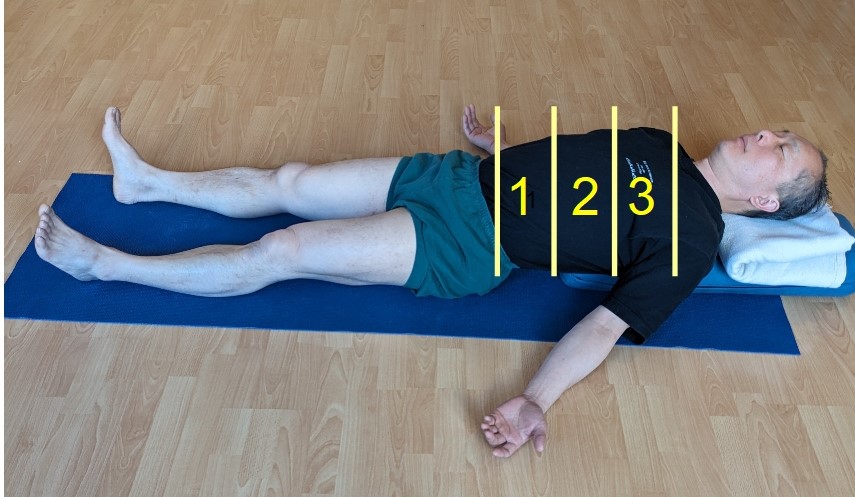
When ready, I finish a slightly deeper exhale and then inhale into the lower trunk for a few seconds, pause, hold the breath for a few seconds, then inhale into my middle trunk. I pause, hold the breath for a few seconds, and inhale into my top trunk. After three interrupted inhales, I sense that my lungs are full and then slowly exhale from the natural start of point of my exhale to its natural end point.
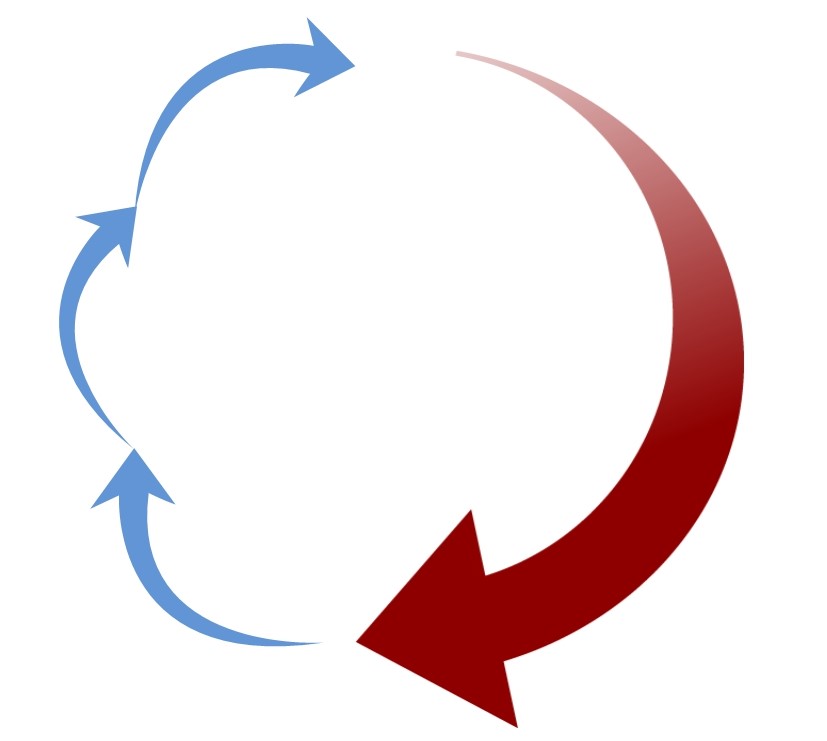
I repeat this viloma cycle, with two normal (‘recovery’) breaths in-between. I observe that the last time I practiced villoma stage 1, I didn’t need the recovery breaths but today I do.
I notice that my chin lifts slightly with the inhales, so I let my lower jaw recede back and this deepens the pit of my throat and steadies my head.
After a time, I observe that everything becomes quieter. I no longer notice the birds, or the sounds of traffic outside. I continue with interrupted inhales, and two recovery breaths in-between.
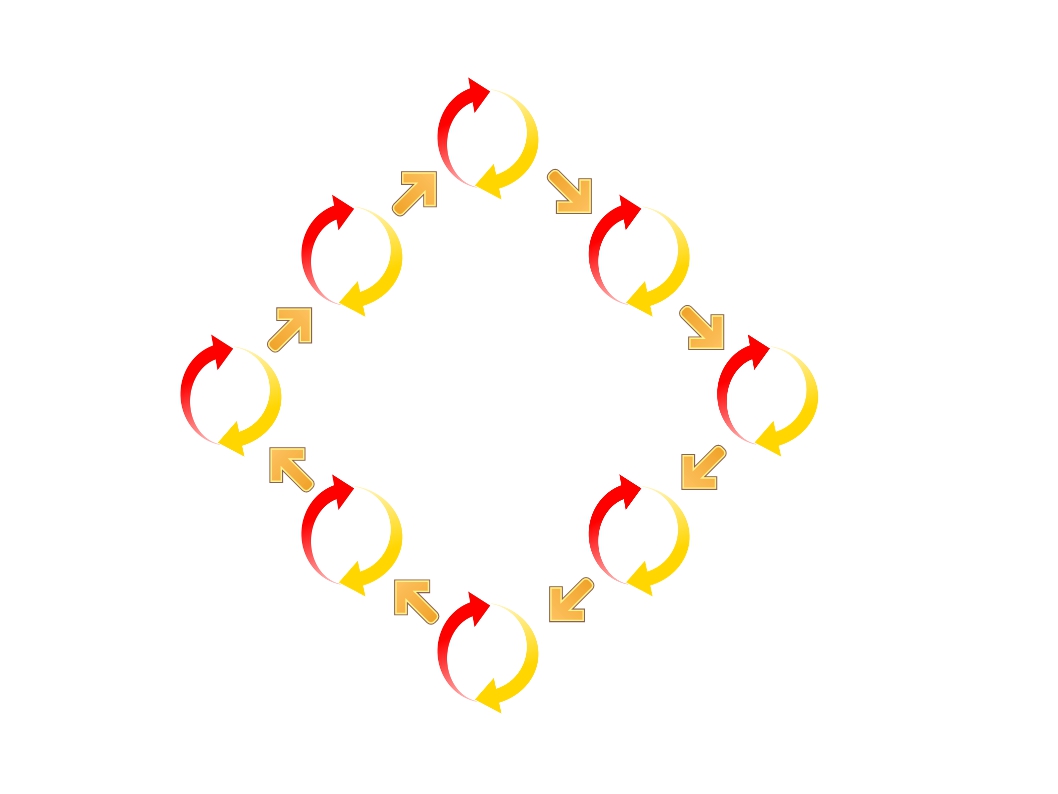
After a time, I finish the cycles on an inhale, then take several recovery breaths. I slowly roll to the right, and transition to seated pranayama.
Viloma pranayama Stage 4
As I did in the preparation for invocation, I prepare my seat. I mentally remark that, unlike the previous day’s practice, my right-side lower back is completely free of strain when moving to the seated position.
I recreate the actions for my seated posture and while becoming steady and stable, I notice:
-
- Compared to my supine position, I feel a stronger lift of my side trunk much like in urdhva hastana
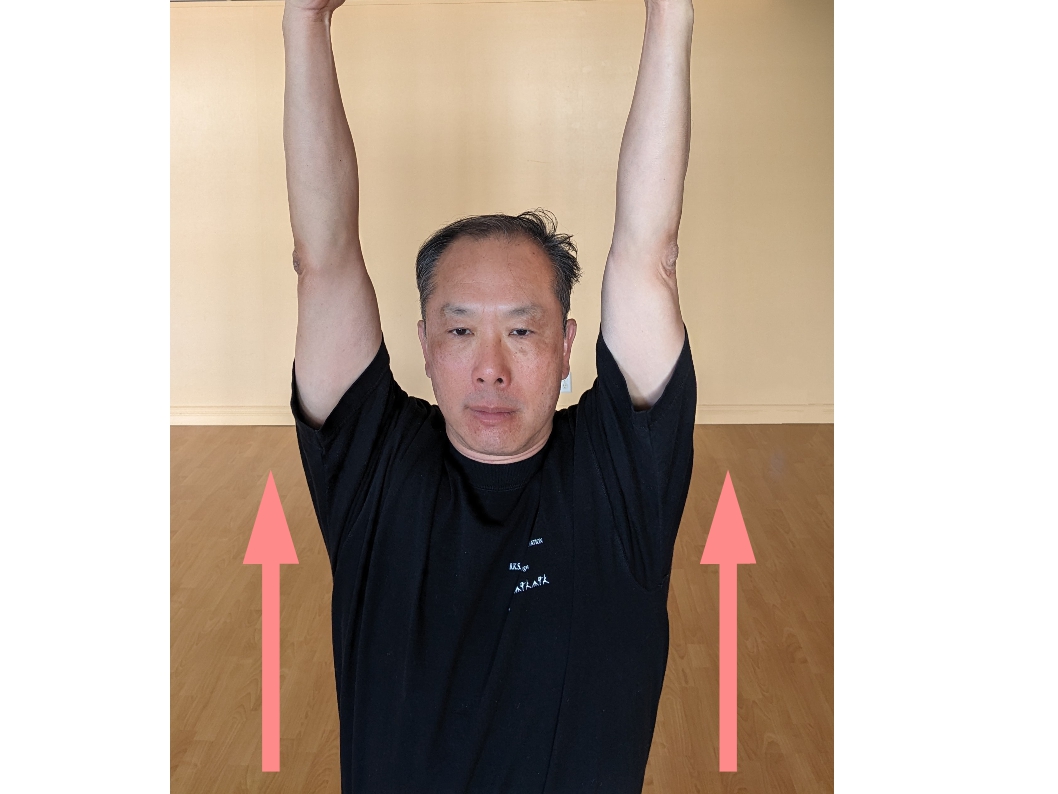
- Compared to my supine position, I notice my front top chest is not as open and so I turn my upper arms externally even more to bring my dorsal spine in; I also coil my back ribs, especially on my right side. This bring my front top chest to be more open and lifted
- I then keep this chest sensation as I lower the head on an exhale
- I sit quietly for several breaths
When ready, I finish a deeper exhale and then inhale into the lower trunk for a few seconds, pause, hold the breath for a few seconds, then inhale into my middle trunk. I pause, hold the breath for a few seconds, and inhale into my top trunk. After three interrupted inhales, I exhale slowly and deeply from the natural start of point of my exhale to its natural end point.
I again incorporate two recovery breaths in-between cycles of villoma pranayama. After a time, I observe that everything becomes even quieter. The breathing pattern gently releases into a smoother and quieter version than when I started in this seated position.
I continue with interrupted inhales, and two recovery breaths in-between; I continue to observe the location, duration and quality of my breaths.
After a time, I finish the viloma pranayama on an interrupted inhale, then take several recovery breaths. I release the chin lock, allow my eyes to open and stay for several breaths.
When ready, I stand up, glance at the clock and notice how much time has gone by, mentally remarking that this is ten minutes longer than the last time I pranayama practice.
I finish with savasana without height under my head and allow my self to transition to this resting pose.
NOTE: This is just one ‘personal’ practice. Each of my practices are different and this is MY observations on THIS one practice. Yours will be different and will also vary from day to day.

It’s a very welcoming place right from the front desk to the large inviting yoga room where a friendly teacher greets you. I find that yoga calms my mind as when I am practising I am focused on the pose that I am doing. Come out and give it a try. – LE

OFFICE HOURS
Monday 9:30 am – 12:30 pm
Tuesday 9:30 am – 12:30 pm
Wednesday 9:30 am – 12:30 pm, 5:00 - 7:00 pm
Thursday 4:30 pm - 7:30 pm
Friday 9:30 am – 12:30 pm
Saturday 9:30 am - 11:30 am
Sunday 9:30 am - 11:30 am
CONTACT US
#202 - 919 Fort Street
Victoria, BC V8V 3K3
Phone: 250-386-9642
Email: iyoga@telus.net
© 2024 | All Rights Reserved

